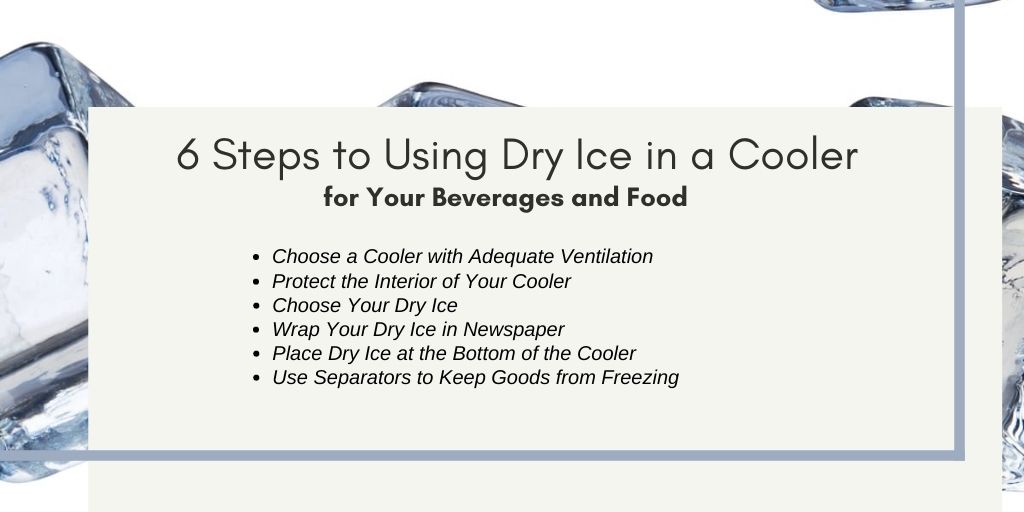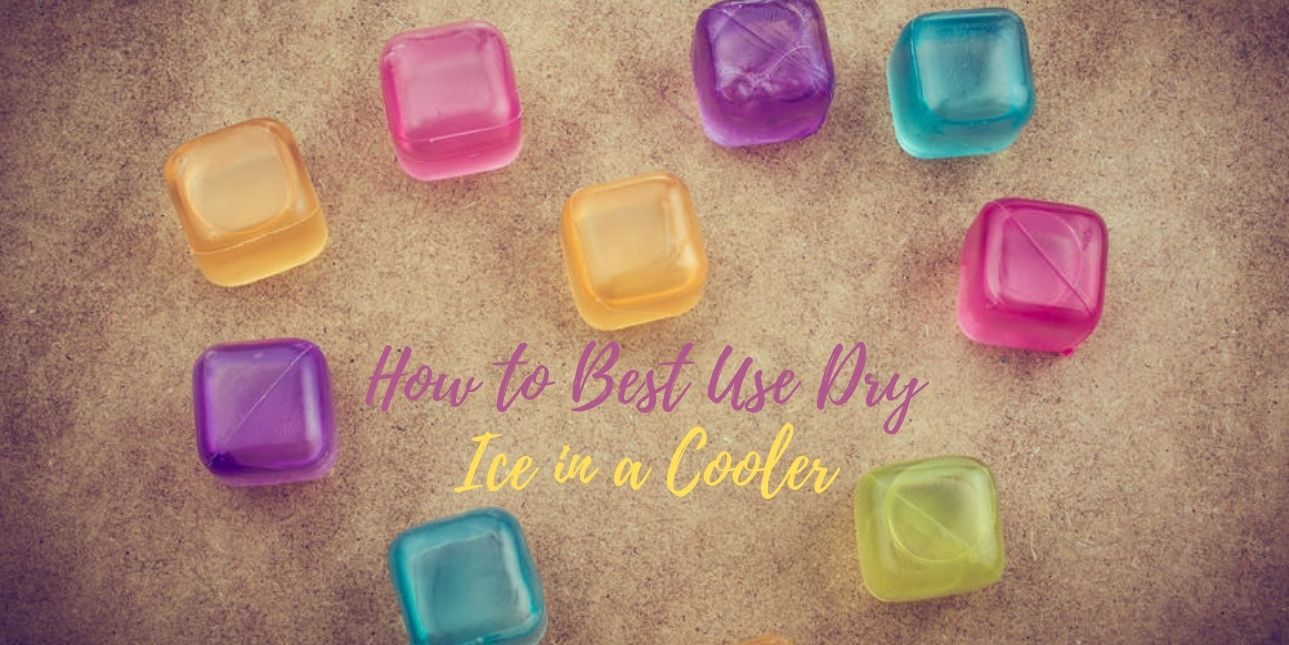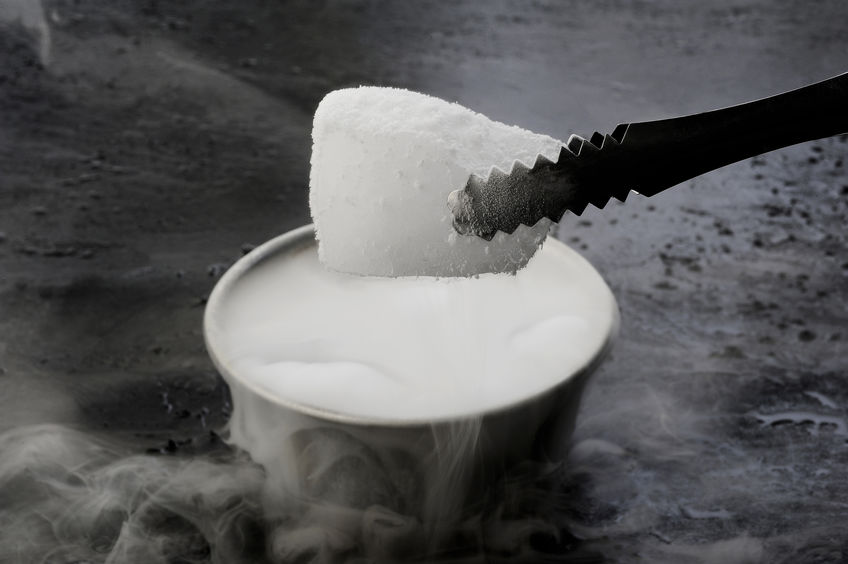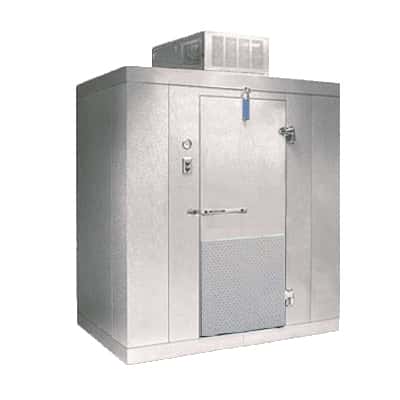Whether you're out traveling and have a handy cooler packed with snacks and beverages, or you have a small cooler in the back of your restaurant/hotel with ready-to-serve beverages – you want to make sure you are doing your best to keep these goods fresh for your consumers. While some larger establishments will do just fine with their walk-in refrigerator, others only have small units or coolers that can't maintain the necessary temperatures. That's why many decide to give dry ice in a cooler a try – but is it safe?
Can You Safely Use Dry Ice in a Cooler?
While dry ice is known to be an irritant if bare skin is exposed to it and can be harmful if ingested, it's generally safe for regular use in chilling/freezing foods and beverages. If you're not familiar with dry ice, then you'll want to take a moment to understand what it is and why it's commonly used alongside ingestible goods.
What is Dry Ice?
Dry ice actually isn't actual water-based ice at all – it's frozen carbon dioxide with a surface temperature of approximately -109.3 degrees Fahrenheit. Unlike traditional ice made from water, when dry ice begins to warm up and break down, it doesn't turn from a solid to liquid. Instead, dry ice breaks down into carbon dioxide gas, which is that soft white smoke most people associate with dry ice.
Benefits of Dry Ice
One of the most noteworthy benefits of using dry ice in a cooler is that a single five-pound brick will typically last anywhere between 18 and 24 hours. That means you can keep your perishable goods fresh for some time when stored correctly. Should your goods be frozen on top of that, then, in the right conditions, your goods will remain frozen long after the dry ice has converted from its solid state to its gaseous state.
Disadvantages of Dry Ice
Unfortunately, one of the biggest disadvantages of using dry ice in a cooler is that it doesn't last. As the substance needs to maintain its temperature of -109.3 degrees Fahrenheit, you can't store it in your standard freezer for later use.
While dry ice is great for use in travel coolers, you need to remember that as the dry ice breaks down, it will immediately become pure carbon dioxide. So, if you're traveling in a vehicle, you'll want to make sure you have adequate ventilation to ensure that no carbon dioxide builds up in the vehicle – which could lead to significant health issues.
6 Steps to Using Dry Ice in a Cooler for Your Beverages and Food

Whether you're traveling or catering an event, utilizing dry ice in a cooler is an excellent way to keep your perishable goods fresh outside of traditional refrigeration. To ensure that your food and beverages maintain their quality, you want to make sure you are using your dry ice correctly.
Not sure how to properly pack dry ice in a cooler? Here are six steps you'll want to make a note of:
1. Choose a Cooler with Adequate Ventilation
Believe it or not, the first step in preserving your perishables with dry ice is choosing the proper cooler. While most people will opt for a Styrofoam cooler, others will choose a plastic unit because they tend to have better ventilation options.
Ventilation is essential because dry ice can easily damage your cooler.
2. Protect the Interior of Your Cooler
Along with proper ventilation, you'll want to take extra precautions to protect the interior of your unit from cracking or breaking, which is common with most plastic coolers. The best way to protect your cooler's interior is to place pieces of cardboard or Styrofoam along the unit's bottom and sides.
3. Choose Your Dry Ice
Dry ice typically comes in either large chunks/bricks or small pellets. If you're looking to get the most out of your dry ice, you'll want to opt for the bricks as they will take longer to evaporate, ensuring your food and beverages stay chilled longer.
4. Wrap Your Dry Ice in Newspaper
Once you've purchased your dry ice, you'll want to make sure you wrap your chunks/bricks in sheets of newspaper before packing them into the cooler. This will help better insulate the dry ice, slowing down the natural evaporation process. This will also help provide a barrier between the dry ice in the cooler and your food/beverages, ensuring it won't freeze.
5. For Quick Access, Place Dry Ice at the Bottom of the Cooler
If you're planning on using your food or beverages right away, then you'll want to go ahead and place the dry ice at the bottom of your cooler and then pack your goods on top. However, if you want to freeze these goods, or keep them frozen longer, then you'll want to load the dry ice on top.
6. Use Separators to Keep Goods from Freezing
Finally, you want to make sure you are using some sort of separator between your dry ice and your goods. If you don't, then you risk accidentally freezing your fresh goods. The best way to avoid this is to wrap your dry ice in sheets of newspaper and then place a sheet of cardboard between your dry ice and goods. Then, you'll want to pack sheets of newspaper in any available gaps between products to insulate them further, ensuring they stay fresh longer.
Utilizing Dry Ice in a Cooler to Keep Your Goods Chilled
Sure, while using dry ice in a cooler does take some care and preparation, it is a viable option for keeping your food and beverages fresh and cool outside of traditional refrigeration units. It's an excellent option for those who are planning on traveling or camping.
It also works great for those bakeries and restaurants that offer delivery or catering services, as it ensures your goods don't spoil, melt, or otherwise warm up during the transportation process or onsite preparations.
You want to make sure you are correctly packing your coolers and are using proper safety precautions when handling the dry ice, such as wearing heavy-duty gloves and working in a ventilated area.








